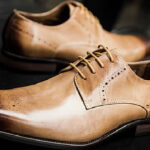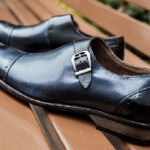A lot of people wear shoes day in and day out. Unfortunately, these shoes are worn regularly, which is not good for their quality. The constant use can cause them to dry rot. This issue needs to be remedied as soon as possible before it becomes worse or starts costing more money than necessary. Here are some steps on how to keep shoes from dry rotting mentioned in this blog post so that you can take to help keep your shoes from drying up too quickly.
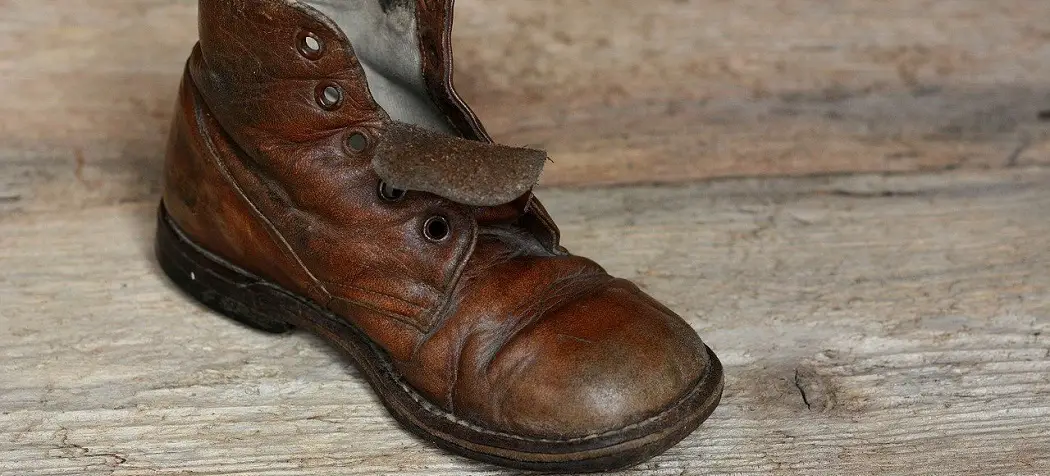
What Is Dry Rot In Shoes?
Dry rot in shoes basically means the growth of a fungus. Fungi are found worldwide and can be found in plant life; bread and fruits are just some examples of foods that can have different types of fungi growing upon them. Fungi come from mildew spores that grow into a spore case or sachet and release millions if not billions of spores.
The reason why dry rot in shoes occurs is simply down to moisture created by sweat from our footwear, and when it gets trapped within the shoe, it creates a warm climate for the fungi to grow on and even thrive on. Therefore, the aroma alone coming out from your shoes will display an old-type milk smell with a hint of vinegar emitted by the bacteria breaking down the sweat.
Possible Reasons Dry Rot Occurs In Shoes
- Moisture or water is trapped inside of the shoe and cannot evaporate.
- The shoes are made from materials that do not breathe well, which causes moisture to build up within the shoe and can lead to rapid deterioration of its fabric.
- Shoes with leather uppers are prone to dry rot due to their porous nature. Therefore, they require extra care.
- Shoes are often not made from the best quality material.
- Shoes are not conditioned often enough as they should be.
- Shoes are stored in spaces that have high humidity or dampness, like an attic, bathroom, or basement. Excessive heat and moisture are drawn to the shoes, making them rot faster than stored in a drier location.
- Shoes that haven’t been worn for a long time can cause dry rot due to their moisture.
- Cleaning materials and shoes that don’t breathe can lead to mildew growth inside your shoe, which also causes dry rot over time.
10 Ways on How to Keep Shoes From Dry Rotting
1.Invest in High-Quality Shoes:
The very first thing that you need to do is invest in high-quality shoes. High quality doesn’t necessarily mean an expensive one. You can surely find some great deals on footwear, especially during the summer and winter seasons. Also, ask friends and family members for gift ideas to purchase them a new pair of shoes or boots if they don’t have any yet.
2.Store Shoes in a Dry Environment:
Store your shoes in a dry place. The best way would be to store them inside of your closet. Be sure that there are no moisture or temperature variations that might cause the materials to degrade and deteriorate. If you walk a lot, consider investing in high-quality sneaker trees for men (including women). Sneaker trees help maintain their shape and freshness, making it possible for you to get more mileage out of them before ultimately having to discard them.
3.Buy Corrosion Resistant Metal Hardware:
Some metals are prone to rust when exposed to water and air for a long time period. Make it a point not to purchase any shoes with cheap metal buckles, laces, rivets, studs, eyelets, hooks, or zippers. One of the first signs of deterioration is when rust develops between the metal parts and the shoes.
4.Apply Metal Hardware Plating:
Nowadays, hardware manufacturers have started to coat their products with a layer of plating that prevents oxidization from occurring. This is especially important for those often exposed to water (e.g., firemen, police officers, chefs). Rust or oxidation will not form on an object that has been coated with plating because oxygen molecules can’t reach the elements that are being protected with the coating.
5.Apply Anti-Rust Protectant:
Spray anti-rust protectant onto your shoes after you walk across wet surfaces and before storing them inside of your closet at night. It would help if you always washed your feet in the shower before going to bed. To prevent foot fungus growth, it would be wise to apply the anti-fungal powder onto your feet and on the shoes.
6.Don’t Store Shoes in a Plastic Shoe Box:
Never store your shoes inside of a plastic shoebox. It would help if you always used wooden or fabric boxes instead. Plastic degrades over time, and it will not be as durable as wood, which can last for decades.
7.Use Shoe Trees:
Shoe trees are made with porous material (i.e., cedar) that helps absorb moisture from the interior of the shoes, allowing them to dry quickly after they have been worn out in wet weather conditions. It will also keep your socks smelling fresh all day long! Talk about a two-in-one solution! And remember, invest in high-quality ones because cheaper versions tend to fall apart easily, and you would end up buying another pair anyways.
8.Place Shoes on a Shoe Rack:
If you plan on wearing your shoes for a second day, then place them onto a shoe rack instead of letting them sit inside of your closet. The airflow will dry the interior of the shoes and keep the materials from decaying as fast.
9.Clean Insoles with Vinegar:
Place white vinegar on both insoles and let it soak overnight. It will help get rid of the stinky smells trapped within the insoles, which makes them less desirable to be worn again. Be sure to use unscented white vinegar because scented vinegar can discolor leather once they dry out or evaporate completely.
10.Always Keep Leather Shoes Polished:
Applying a thin layer of beeswax or shellac will help keep the leather materials moist and supple. For shoes with full-grain leather uppers, place a coating of cream polish onto them before storing them at night.
Tips for How to Keep Shoes From Dry Rotting
- Check out your shoes every day and dry them well if they become wet. This prevents moisture from seeping into the shoe, which can cause mold to grow and other problems.

- Remove wet shoes when you come indoors because this will help them dry faster and prevent mildew and bacteria from forming on them due to a lack of airflow inside a warm place like your home or office. You also want to make sure that you take off your shoes when entering someone’s house so that you do not track dirt across carpeted floors, as this can damage the material over time – especially if it contains a lot of colors.
- Use a waterproof protector on your shoes if you plan to wear them in wet and/or muddy areas or work somewhere where there is water close by, such as near pipes or sprinkler systems. The material of the shoe will be protected against these elements, which may otherwise cause tiny cracks and tears inside that can lead to irreparable damage down the road due to mildew growth and other factors like exposure to bacteria.
- Store shoes at least one pair apart so that air circulates throughout your shoe storage area easily. This prevents moisture from developing between each shoe after taking them off for the day but before you get around to dry them fully.
- Use a shoehorn to put your shoes on and take them off instead of yanking them over your heel or sides on their own, which can cause the material to tear or crack inside. When you apply too much force to push a pointy object through an opening that is too small for it, you run the risk of damage like this because it puts stress where there should be none for something with a shape like a shoe’s heel to pass through another opening of a similar shape but smaller size like that of its front part.
- Turn your shoes upside down to dry them better than letting them sit flat on a surface like a table or a floor. At the very least, put them in an area where all of their sides can receive airflow and some sunshine if possible, as this helps to dry out moisture before it has the chance to cause mold formation inside.
- Use wooden shoe trees if you can get them instead of cardboard ones that are usually provided at a store when you buy new footwear because they do not absorb moisture from shoes as much, which reduces its chances of building up due to lack of air circulation within your storage container for instance.
Things You Can Do To Help Stop The Spread Of Dry Rot
- Keep your shoes away from heat sources such as fireplaces or radiator pipes. Temperature fluctuations can cause moisture inside the shoe to condense and create the perfect environment for mold growth (a common house fungus).
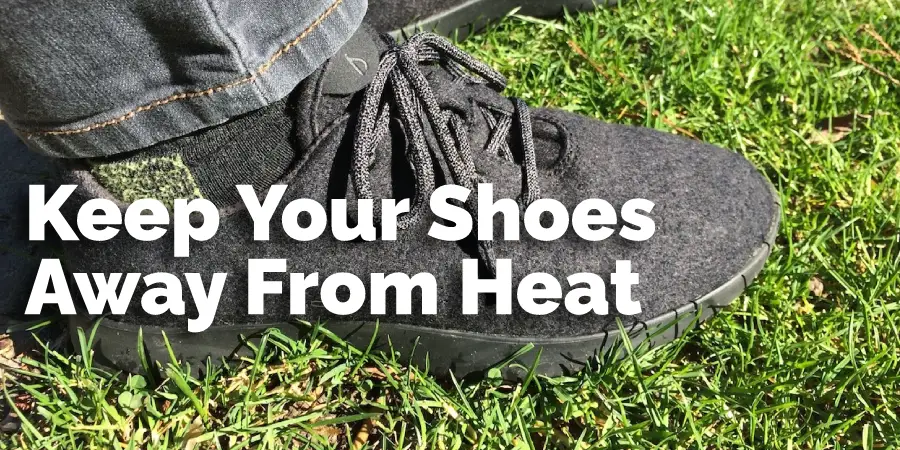
- Store your shoes in a cool, clean place that is free of excess moisture, such as a cedar chest or shoebox lined with fabric that allows airflow. Place each pair of shoes on top of a newspaper or paper towel for optimal drying after wearing them in damp conditions (rain or snow).
- Avoid walking through puddles or stepping in water. The moisture that gets trapped inside your shoe can damage the leather and lead to dry rot.
- You can treat the soles of shoes with waterproof sealants if you live in areas where it rains frequently, but be sure not to get any sealants on other parts of your shoes. Waterproofing sprays for suede and nubuck are also helpful (but use them only as directed). If you have leather boots prone to getting wet, cover them with rubber overshoes when walking through puddles.
- Use a paper bag or brown paper to line the insides of new boots or shoes for two months before switching to cedar shoe trees or newspaper lining (as discussed above). This will help prevent scuff marks on leather that may cause damage over time.
- Give your shoes ample time to air out after wearing them before storing them away for long periods of time. The soles of your footwear can last longer if they are kept in a dry environment with ample airflow.
- Try not to wear the same pair of shoes every single day, especially if you live or work in damp surroundings (such as kitchens and bathrooms). This will help keep your shoes from becoming overly absorbent and encouraging mildew growth within them.
Frequently Asked Questions
Why Are My Shoes Dry Rotting in My Closet?
The reason your shoes are dry rotting in your closet is that you stored them improperly. Shoes should only be stored on shelves for a maximum of six months at most because, over time, the sun’s ultraviolet rays will break down and deteriorate the materials from which your shoes are constructed.
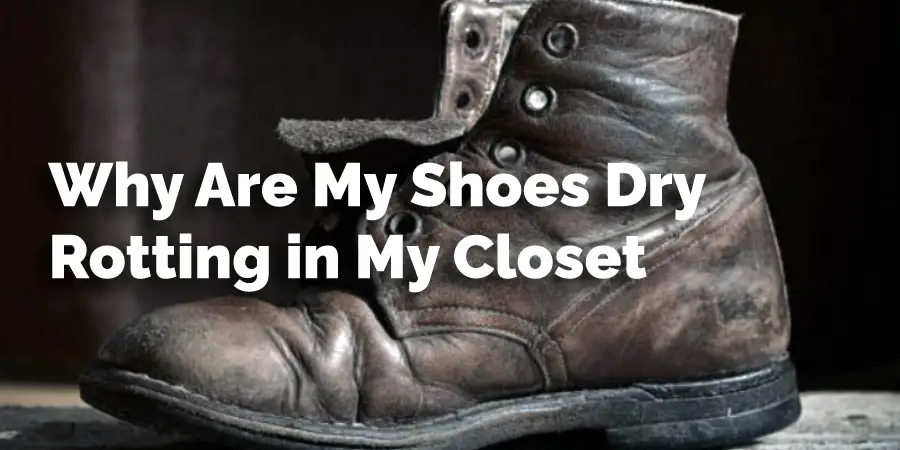
How Can I Tell If My Shoes Are Dry Rotting?
You can tell if your shoes have begun to form holes or cracks by observing if strands of fiber begin to protrude from any part of the shoe. If you gently prod one side with a finger, then slowly lift that finger back up, the strand should slowly raise and stretch slightly before snapping back into place when removed. This test does not apply to higher-quality shoes like those that are made with genuine leather.
How Can I Ensure That My Shoes Are Protected From Dry Rot?
One of the best ways to protect your shoes from dry rotting is by spraying them with a simple shoe protectant. This can be purchased for as little as $2 at any major store and will ensure that your pair of shoes last longer than expected. The most important thing to remember is not to store your footwear in dark closets or drawers because this area does not receive adequate amounts of light for significant exposure periods of time. Keep this in mind when storing your products!
Conclusion
Shoes need to be kept in a dry place. However, if you have been struggling with keeping your shoes from dry rotting, there are many ways that you can combat the issue. One of these solutions includes storing them near heat sources such as radiators or fireplaces.
You may also want to consider buying shoe trees and inserting them inside your footwear when they’re not being worn. Some other methods were mentioned on how to keep shoes from dry rotting in this blog post, which will help keep moisture levels within an acceptable range, so mold doesn’t form on the materials around your feet!



